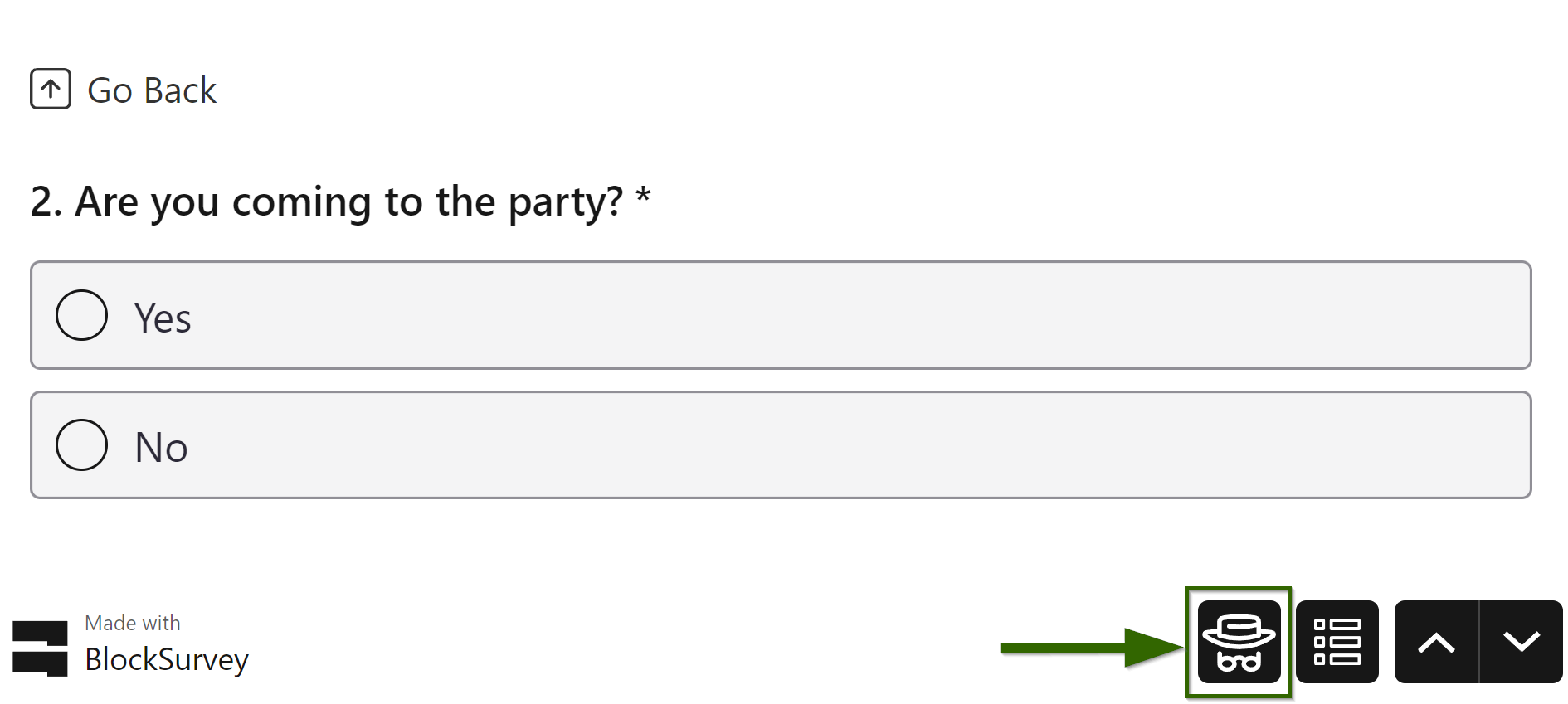Get insights.
Unlock value.
- 14-day free trial
- Set up in minutes
- No credit card required
QR Code for Survey: Top Use Cases and Best Practices
You fixed everything, right?
Made the survey mobile-friendly. Shortened it to five questions. Slapped QR codes on receipts, table tents, product packaging, even bathroom mirrors. One scan, instant access, zero friction.
Response rate? Still pathetic.
Here's what nobody wants to admit: your customers aren't ignoring your surveys because they can't find them. They're ignoring them because they don't trust you.
They've been burned before. Filled out feedback forms. Complained about real problems. Watched absolutely nothing change. Now, when they see your beautifully designed QR code, they keep walking.
You're dealing with survey fatigue that's turned into survey trauma. And throwing a QR code at the problem just makes it faster for people to ignore you.
Why QR Code Surveys Actually Fail (It's Not What You Think)
They're Still Asking the Same Pointless Questions
A QR code doesn't magically make "rate us 1-10" meaningful. You've just digitized the same vague questions people have learned to hate:
- "How was your experience?" (Too broad to be useful)
- "Would you recommend us?" (Who actually asks their friends using a numerical scale?)
- "Any additional comments?" (Translation: we didn't ask the right questions, so you do our job for us)
You're not collecting insights. You're collecting compliance.
The Surveillance Paranoia is Real
QR code surveys create a unique problem: the person you're asking about is often standing right there.
Promising anonymity doesn't help. People have been promised "anonymous" surveys that later got weaponized in performance reviews. They've learned that "anonymous" usually means "we just won't tell you we're tracking you."
People Drop Halfway Through Anyway
Even when someone DOES scan your QR code (miracle!), most people abandon the survey before finishing. Average completion rate across all survey channels? Just 33%.
Why? Because halfway through, they realize this survey is like every other survey. Generic. Pointless. Clearly designed by someone who's never actually experienced the problem they're asking about.
What Actually Works: QR Surveys That Break the Pattern
The surveys that get responses aren't trying to measure satisfaction. They're trying to capture truth that people are afraid to say out loud.
Hospital Patient Feedback That Cuts Through the Performance
You want real feedback from patients? Stop asking them to rate their doctor visit on a scale.
Instead, put a QR code in the exam room that asks: "What didn't your doctor ask you today that you wish they had?"
One question. Specific. Asked in private, right after the appointment, when the gap in care is fresh in their mind.
How BlockSurvey helps here: Medical feedback is sensitive. Patients worry their complaints will affect their care or that their doctor will find out who said what. If you design the survey anonymously (no email collection, no identifying questions), BlockSurvey's end-to-end encryption ensures even hospital admins can't connect responses to patient records. Plus, BlockSurvey is HIPAA compliant, so healthcare organizations can actually use it without compliance nightmares.
Restaurant Recovery After Everything Goes Wrong
Your kitchen is running 45 minutes late. A server spilled a drink. A table walked out angry.
Standard move: send a generic "how was your visit?" email three days later. By then, they've already rage-posted on Yelp.
Better move: QR code on the check-out receipt that says, "We know that was rough. Tell us what we screwed up so we can actually fix it."
You're not pretending everything was fine. You're acknowledging reality and asking for help while they're still annoyed enough to tell you the truth.
How BlockSurvey helps here: Customers don't want to get a server fired, but they DO want to vent about bad service. BlockSurvey lets them be brutally honest without guilt - because the feedback can't be traced back to blame a specific person. Management gets the truth. Staff doesn't get blamed.
Harassment Reports That People Actually File
Your company has a harassment problem. Everyone knows it. Nobody reports it.
Why? Because HR's "confidential reporting system" still requires names, departments, and manager info. Victims worry their report will get back to the harasser or that HR will do nothing and they'll have painted a target on their back.
Better approach: QR codes in private spaces (bathrooms, stairs) asking: "Have you witnessed or experienced harassment here?"
No names. No follow-up meetings unless the reporter chooses to identify themselves.
How BlockSurvey helps here: Traditional survey tools log IP addresses, device fingerprints, and timestamps that can identify reporters even without names. Victims know this. BlockSurvey's end-to-end encryption strips all metadata, making it impossible to trace reports back to individuals. Companies get intelligence about problems. Reporters stay protected. That's when people actually come forward.
Event Feedback While People Are Still in the Building
You just hosted a conference, training session, or corporate offsite. Standard move: email survey two days later asking people to rate speakers and sessions.
Response rate: 11%. And the responses you get are either glowing (from people-pleasers) or scathing (from the perpetually angry).
Better move: QR codes on break room signs asking, "What's everyone complaining about in the hallways that nobody's saying officially?"
Real-time feedback. Captured while cognitive dissonance is high- when there's a gap between what people are saying publicly versus what they're actually thinking.
How BlockSurvey helps here: Conference attendees don't want their criticism tied back to them, especially if their boss is watching who scans what. BlockSurvey's infrastructure makes surveillance impossible. People can be honest about the boring keynote or the disorganized schedule without political consequences. Let them know their surveys are fully anonymous, use our anonymous seal to gain trust.

The Real Problem: Your Survey Tool Wasn't Built for Honesty
Here's the uncomfortable truth about Google Forms, Typeform, SurveyMonkey, and every other mainstream survey platform:
They were built for marketing teams and HR compliance. Not for high-stakes truth-telling.
If your survey platform CAN track respondents, people will assume it DOES track respondents. And they'll adjust their answers accordingly.
"We promise we won't look" isn't good enough anymore. People need infrastructure they can trust.
Why BlockSurvey is Different (and Why It Matters for QR Surveys)
BlockSurvey doesn't just promise privacy. It's architecturally incapable of violating it.
End-to-end encryption means:
- We don't see respondent answers. Ever.
- We can't hand data over to lawyers, bosses, or regulators - because we don't have access to it
- Your respondents aren't trusting a privacy policy. They're trusting.
The Bottom Line
Your QR codes don't fail because people can't find them. They fail because people don't trust you.
You can write perfect survey questions, but if people don't trust the infrastructure carrying their answers, they'll keep lying. Or worse - they'll keep ignoring you entirely. BlockSurvey fixes the trust problem. Not with promises. But with encryption, that makes surveillance impossible.
Fix the trust. Fix the response rate. Try BlockSurvey now! Still have questions? Book a demo to see it in action.
QR Code for Survey: Top Use Cases and Best Practices FAQ
Is BlockSurvey really anonymous?
Yes. BlockSurvey uses end-to-end encryption, meaning even we can’t see your respondents’ answers. There are no IP logs, device fingerprints, or hidden metadata. Your participants’ privacy isn’t promised - it’s mathematically guaranteed.
Can I use BlockSurvey with QR codes?
Absolutely. You can generate a QR code for any survey link. Whether it’s on a receipt, poster, or packaging, scans go directly to a secure, encrypted survey — no tracking, no redirects, no cookies.
Is BlockSurvey HIPAA compliant?
Yes. BlockSurvey is HIPAA, GDPR, and ISO 27001 compliant, making it safe for sensitive data such as healthcare, HR, and employee feedback.
What makes BlockSurvey different from Google Forms or Typeform?
Those tools are built for data collection. BlockSurvey is built for truth collection. It’s the only survey tool designed from the ground up for privacy-first, anonymous feedback, not marketing analytics.
What kind of surveys work best on BlockSurvey?
Any scenario where trust matters — medical feedback, workplace culture, harassment reports, customer complaints, or event feedback. If honesty is mission-critical, BlockSurvey will get you answers others can’t.
Get insights.
Unlock value.
- 14-day free trial
- Set up in minutes
- No credit card required







